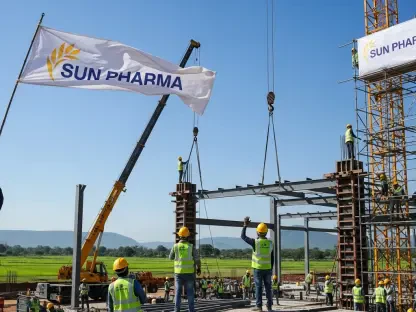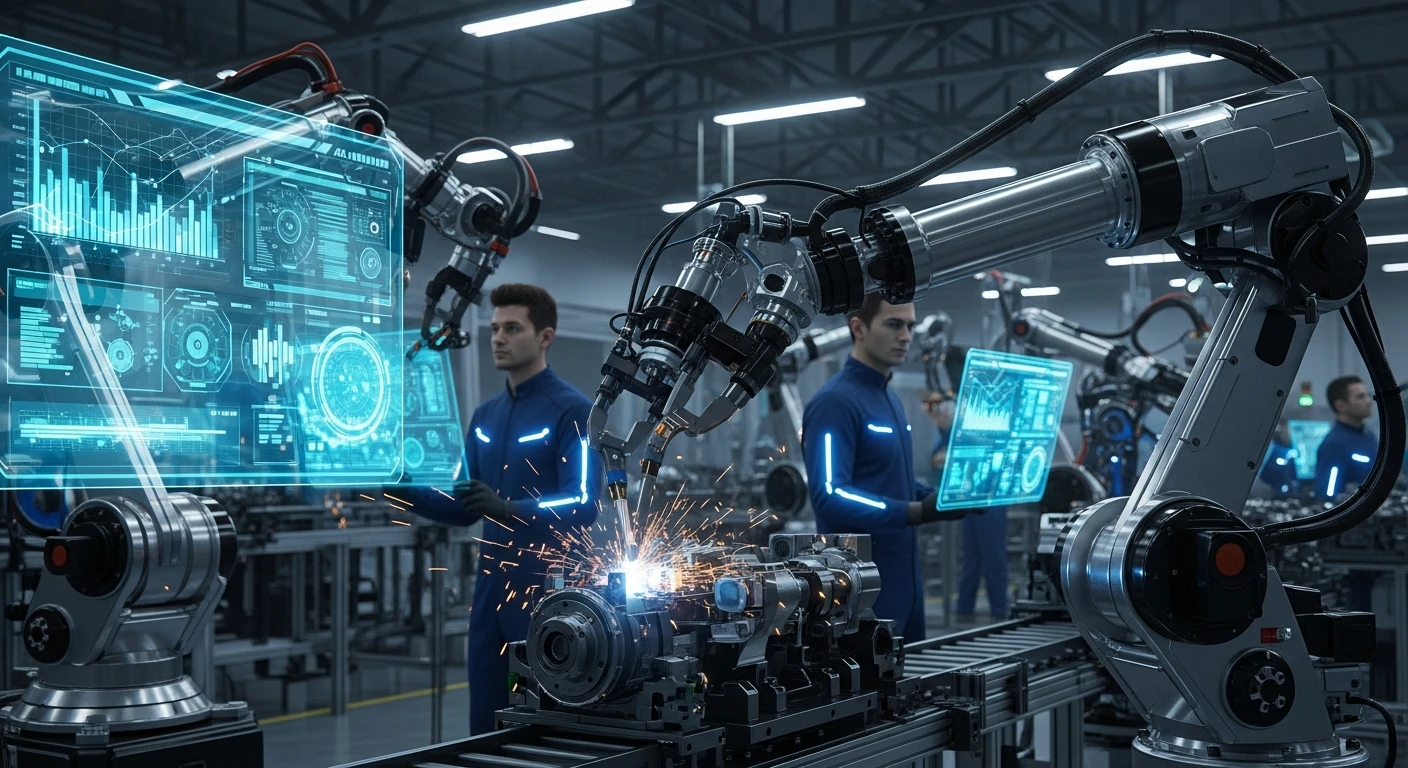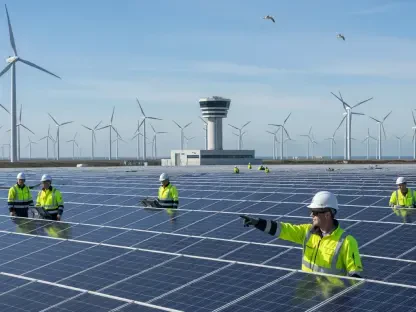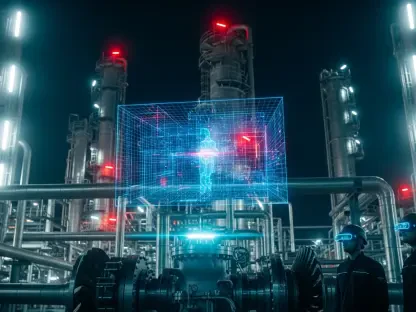In an era where technology evolves at a breathtaking pace, few companies stand as pivotal to global innovation as Taiwan Semiconductor Manufacturing Company (TSMC), the world’s leading semiconductor foundry. Positioned at the epicenter of a transformative wave, TSMC is riding the crest of Artificial Intelligence (AI), a phenomenon driving an insatiable appetite for advanced chips. This demand is not merely a trend but a fundamental shift, powering everything from cloud computing platforms to autonomous vehicles and sophisticated robotics. TSMC has emerged as the linchpin in this AI revolution, supplying the high-performance silicon that fuels cutting-edge applications across diverse industries. The scale of this impact is evident in recent financials, where AI-related chips contributed approximately $10 billion, or one-third, of TSMC’s staggering $31.7 billion revenue in the second quarter of this year. High-performance computing (HPC), deeply intertwined with AI workloads, accounts for 60% of the company’s total earnings, signaling a profound reliance on AI as a growth engine. This dynamic raises compelling questions about how TSMC’s technical expertise, strategic importance, and global influence are shaping the future of technology amidst both opportunities and challenges.
The Technical Edge of TSMC in the AI Boom
Pioneering Process Technologies
TSMC’s ascent to the forefront of the semiconductor industry is rooted in its unparalleled mastery of advanced manufacturing processes, particularly with 3-nanometer (nm) and 5nm nodes. These cutting-edge technologies allow for chips with greater transistor density, which translates to enhanced performance and energy efficiency—key attributes for AI applications. Tasks such as training vast neural networks or enabling real-time data inference demand immense computational power, and TSMC’s ability to produce chips that meet these needs sets it apart. By shrinking the size of transistors, the company ensures that AI hardware can process larger datasets faster while consuming less power, a critical factor as energy concerns grow. This technical prowess not only supports current AI demands but also positions TSMC to anticipate future requirements, maintaining its competitive advantage in a rapidly evolving field.
Beyond the realm of process nodes, TSMC’s innovation extends to the integration of sophisticated solutions tailored for AI’s unique challenges. Techniques like Chip-on-Wafer-on-Substrate (CoWoS) packaging enable the combination of multiple chip components into a single, high-performing unit, optimizing speed and efficiency for AI accelerators. Additionally, the incorporation of high-bandwidth memory (HBM) ensures that data can be accessed at unprecedented rates, a necessity for the intensive workloads of modern AI models. These advancements are not mere incremental improvements but game-changers, allowing TSMC to cater to the complex needs of industry giants and emerging players alike. This focus on holistic innovation underscores why TSMC remains the go-to foundry for those pushing the boundaries of intelligent systems.
Sustaining Leadership Through R&D
Investment in research and development (R&D) forms the backbone of TSMC’s ability to stay ahead in the AI-driven semiconductor race. The company consistently channels significant resources into exploring next-generation technologies, ensuring it can deliver solutions that anticipate market needs. This proactive approach is evident in its ongoing efforts to refine process technologies and develop even smaller nodes, such as the transition toward 2nm architectures expected in the coming years. Such advancements promise to further boost chip performance, a crucial factor as AI models grow in complexity and scale. By maintaining a robust R&D pipeline, TSMC not only addresses current demands but also builds a foundation for long-term relevance in an industry where obsolescence looms as a constant threat.
Equally important is TSMC’s commitment to adapting its manufacturing capabilities to the evolving landscape of AI hardware requirements. As applications diversify—spanning from edge devices to massive cloud data centers—the need for customized silicon solutions becomes paramount. TSMC’s ability to offer tailored manufacturing processes allows it to support a wide array of AI-driven products, from low-power chips for mobile devices to high-capacity processors for server farms. This flexibility, underpinned by relentless innovation, ensures that TSMC can meet the nuanced demands of its clients, reinforcing its status as an indispensable partner in the AI ecosystem. The focus on versatility in production techniques highlights a strategic foresight that keeps TSMC at the industry’s cutting edge.
Competitive and Strategic Implications
Dominance in the AI Ecosystem
TSMC’s manufacturing capabilities exert a profound influence on the competitive dynamics of the AI industry, creating a distinct hierarchy among technology companies. Industry leaders such as NVIDIA, Apple, Google, and AMD depend heavily on TSMC to produce their state-of-the-art designs, including NVIDIA’s powerful #00 GPUs and Google’s specialized Tensor Processing Units (TPUs). Access to TSMC’s advanced production capacity enables these giants to innovate at a rapid pace, rolling out AI solutions that set market standards. This reliance creates a significant barrier for smaller firms or startups, which often lack the resources or relationships to secure similar manufacturing slots. As a result, the industry sees a concentration of power among a select few, with TSMC acting as the gatekeeper to cutting-edge AI hardware development.
This competitive disparity extends beyond mere access to technology, shaping the broader trajectory of AI innovation itself. Companies with secured TSMC capacity can iterate on designs faster, bringing new products to market ahead of rivals and capturing consumer interest. Meanwhile, smaller entities are frequently relegated to niche markets or forced into partnerships with larger players to gain a foothold. This dynamic not only widens the gap between industry leaders and followers but also influences which AI applications gain traction, as resource-rich companies can prioritize projects with the highest potential impact. TSMC’s role as a manufacturing powerhouse thus becomes a decisive factor in determining the pace and direction of technological progress in the AI domain.
Global Influence and Supply Chain Risks
On a geopolitical level, TSMC’s strategic importance cannot be overstated, particularly given its location in Taiwan and its role in global semiconductor supply chains. The company supplies 92% of the advanced chips used in the U.S., making it a critical asset for national security and economic stability in multiple countries. However, this concentration of manufacturing in a single region introduces significant vulnerabilities, especially amid geopolitical tensions that could disrupt operations. Any potential conflict or instability in Taiwan could send shockwaves through the AI industry, halting production and stalling innovation at a global scale. This reality underscores the urgent need for diversified manufacturing bases to mitigate risks and ensure continuity.
Economically, TSMC’s growth driven by AI demand fuels broader impacts, including substantial capital expenditure and job creation in the semiconductor sector. The ripple effects extend to advancements in related fields like materials science and manufacturing equipment, fostering a cycle of innovation. Yet, the heavy reliance on TSMC also raises concerns about supply chain resilience, prompting nations and companies to explore alternatives such as onshoring or regional production hubs. TSMC itself has taken steps to address these issues by expanding its global footprint with new facilities outside Taiwan, though such efforts require time and immense investment. Balancing these economic benefits with strategic risk management remains a pressing challenge for stakeholders across the technology landscape.
Looking Ahead: Opportunities and Challenges
Evolving Technologies and Market Demands
The future of the AI-semiconductor relationship promises to be even more intertwined, with TSMC poised to maintain its leadership through continuous technological advancements. Progress toward 2nm process nodes and beyond is set to deliver chips with unprecedented performance, meeting the escalating demands of increasingly complex AI models like large language models (LLMs) and multi-modal systems. Additionally, innovations in packaging technologies will further enhance the efficiency of AI hardware, ensuring that computational power keeps pace with application needs. With tech giants projected to invest over $400 billion in AI infrastructure by 2026, the demand for TSMC’s cutting-edge solutions shows no sign of slowing, positioning the company at the heart of this transformative era.
Beyond immediate advancements, the long-term horizon holds potential for groundbreaking shifts in computing paradigms, such as quantum and neuromorphic architectures. These emerging fields could redefine the hardware requirements for AI, demanding entirely new approaches to chip design and production. TSMC’s proactive stance in exploring such technologies ensures it remains adaptable, ready to pivot as industry needs evolve. This forward-thinking mindset is complemented by the company’s ability to scale production capacity in response to market growth, a critical factor as AI permeates deeper into sectors like healthcare, transportation, and entertainment. Staying ahead of these trends will solidify TSMC’s role as a cornerstone of technological progress.
Addressing Sustainability and Systemic Risks
As TSMC navigates this growth trajectory, significant challenges loom, particularly around the environmental impact of semiconductor manufacturing and AI data centers. The energy-intensive nature of chip production and the massive power requirements of AI workloads raise pressing questions about sustainability. Addressing these concerns will require innovative solutions, such as more energy-efficient manufacturing processes and the adoption of renewable energy sources for production facilities. Industry-wide collaboration will also be essential to develop standards that balance technological advancement with ecological responsibility, ensuring that the AI boom does not come at an unsustainable cost to the planet.
Simultaneously, systemic risks tied to supply chain security and geopolitical pressures demand strategic attention. The escalating costs of leading-edge manufacturing pose financial hurdles, while the need for secure, diversified supply chains grows more urgent amid global uncertainties. TSMC’s efforts to expand its manufacturing presence globally are a step in the right direction, but building resilience will require coordinated efforts from governments, industry players, and technology providers. By prioritizing investments in both innovation and risk mitigation, TSMC can continue to drive the AI revolution while safeguarding against potential disruptions. This dual focus on opportunity and responsibility will shape the company’s legacy in the years ahead.
Reflecting on a Transformative Journey
Looking back, TSMC’s journey through the AI-driven semiconductor surge marked a historic chapter in technology, where silicon became synonymous with intelligence at an unprecedented scale. The company’s ability to deliver cutting-edge chips fueled breakthroughs across industries, from autonomous systems to cloud-based AI platforms, reshaping how societies functioned. Its technical innovations, like advanced process nodes and packaging solutions, laid the groundwork for a new era of computational power, while its strategic importance highlighted the interconnectedness of global economies. Challenges around sustainability and supply chain risks were met with determined efforts to adapt, reflecting a commitment to long-term stability. As this pivotal period unfolded, TSMC stood as both a beneficiary and a catalyst of AI’s transformative impact, leaving an indelible mark on the trajectory of human progress. Moving forward, the focus must shift to harnessing these lessons—investing in sustainable practices, securing supply chains, and fostering collaborative innovation—to ensure that the momentum of this era propels technology toward a balanced and resilient future.









